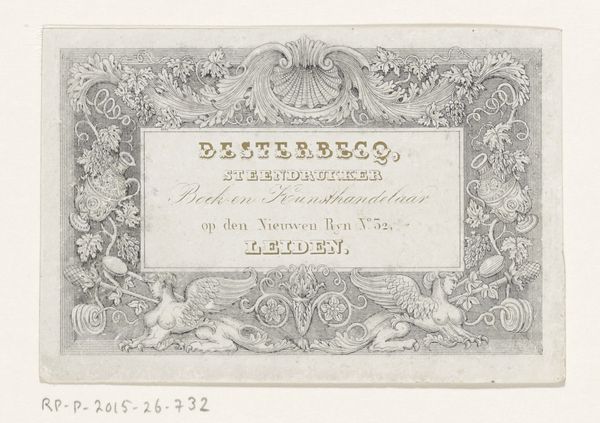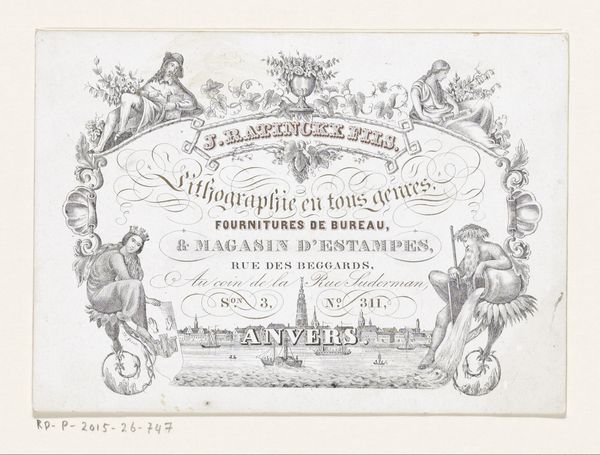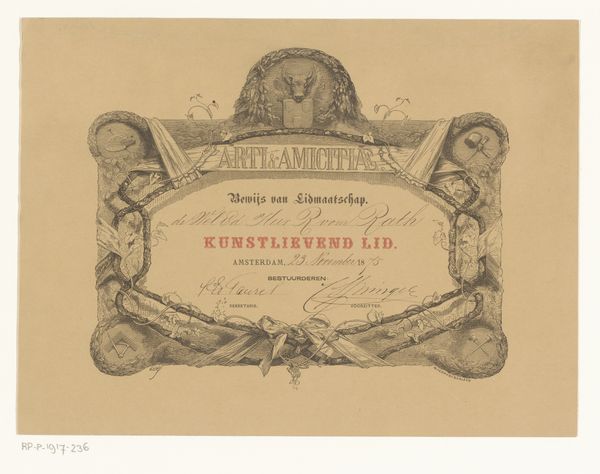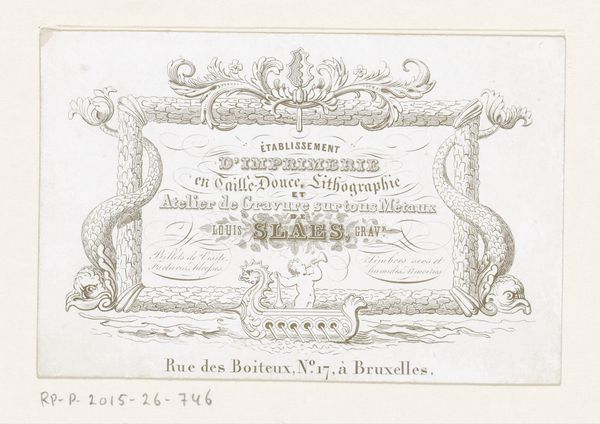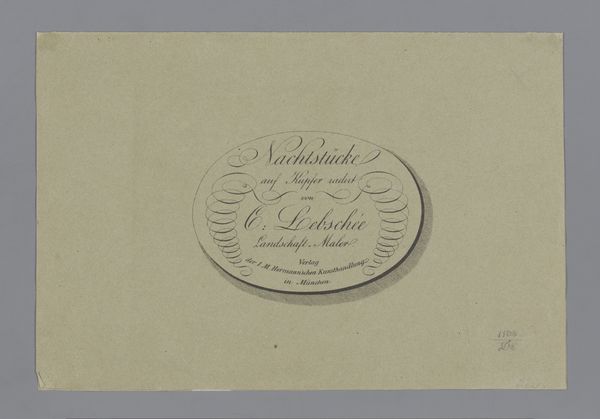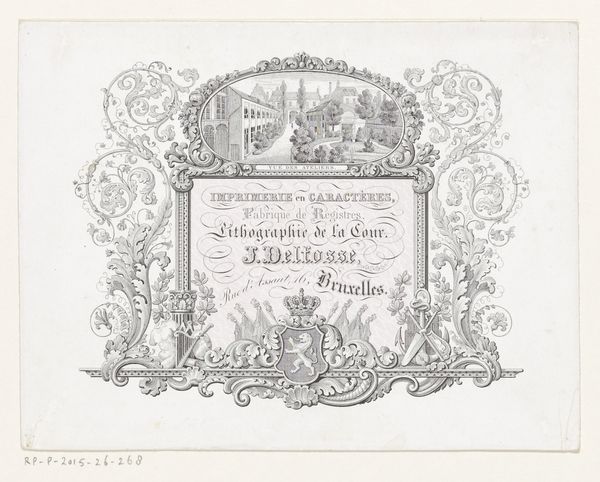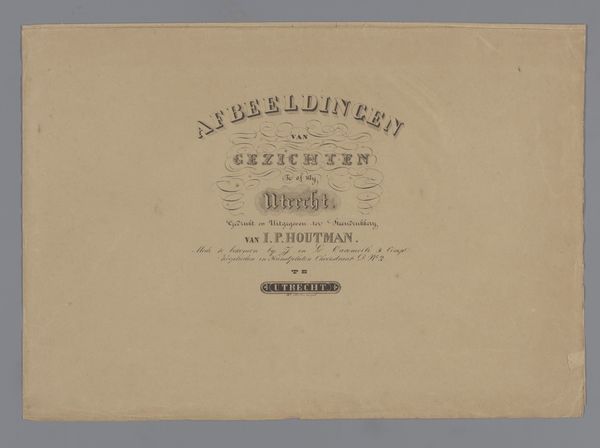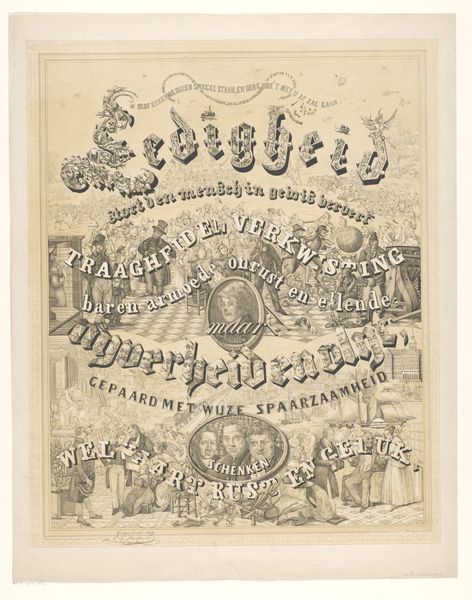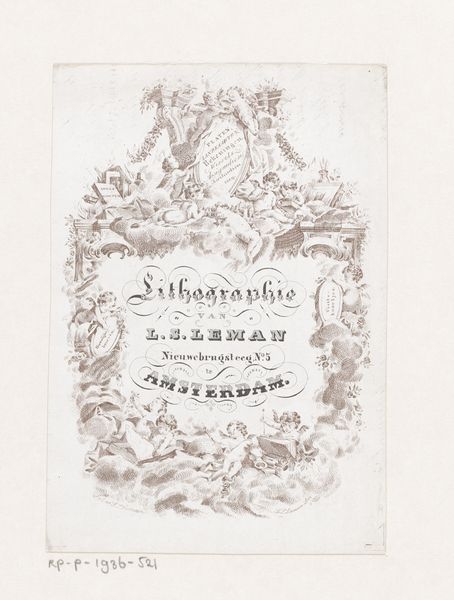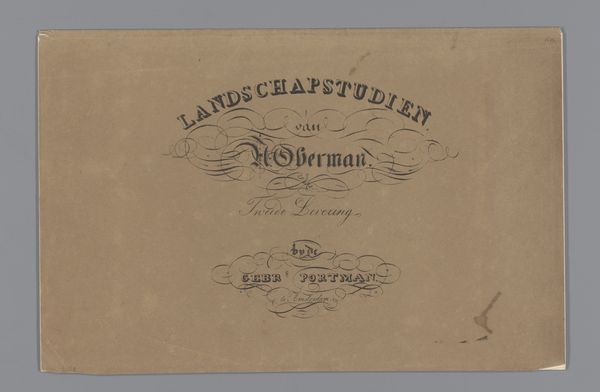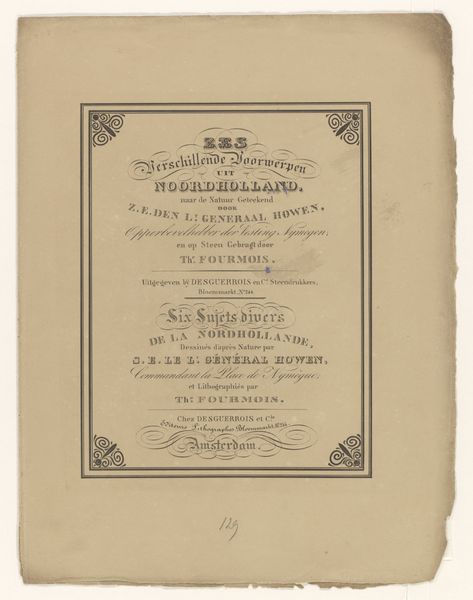
drawing, graphic-art, lithograph, print, paper, ink, engraving
#
drawing
#
graphic-art
#
lithograph
# print
#
old engraving style
#
paper
#
ink
#
geometric
#
line
#
pen work
#
decorative-art
#
engraving
Dimensions: height 62 mm, width 100 mm
Copyright: Rijks Museum: Open Domain
Curator: Welcome. We’re looking at a print called “Ornamentele omlijsting,” which translates roughly to “Ornamental Framing”. It’s attributed to C. de la Potterie and dates to before 1839. Editor: My first impression is how intricate it is! It’s so delicate and formal, like a calling card for another era. All that fine line work – you can practically feel the engraver’s hand. Curator: Absolutely. As a lithograph and engraving, it showcases the artistry and craft of early printmaking. These weren’t mass-produced posters; this was skilled labor translating text into image, which was significant in visual communications at the time. Editor: Thinking about that process, the transfer of image, from the original drawing, the skill in replicating the original artwork to print must have demanded particular knowledge of tools, material and precision of craftmanship. Did De la Potterie do all the printmaking and lithography herself? Curator: The details about Potterie’s individual studio practice are a bit hazy. The “S. de Visser te ‘S Gravenhage” prominently displayed suggests the lithography was commissioned for a particular business in The Hague. Understanding the commissioning relationships within early 19th-century print shops offers valuable insight to workshop practices, entrepreneurial marketing, and consumerism Editor: Interesting to note is the address on this print "Bierkade. Wijk 0. N°200" – a place to enjoy a drink, likely an important trading port and community center. A marker in understanding this ornamental work's integration with its function within society. Curator: Precisely. Print shops were central hubs that reflected a burgeoning, image-driven society. So this artwork not only reveals print production techniques, but offers a historical window into commerce, advertisement, and the role of images in everyday life. Editor: For me, appreciating this piece comes down to understanding the labour that underpins what we now often overlook: the immense human capital it must have taken to produce, and how printmakers used those methods of transferring drawings in innovative forms. Curator: A keen perspective to consider the artist's work to meet client's demands in visualizing what’s significant within that epoch. The lithography has more socio-economic value to discover through the context of its existence and place in time. Editor: Looking closer at “Ornamental Framing” reminds us how vital these processes were and allows a space for understanding craft at the center of materialist making.
Comments
No comments
Be the first to comment and join the conversation on the ultimate creative platform.
